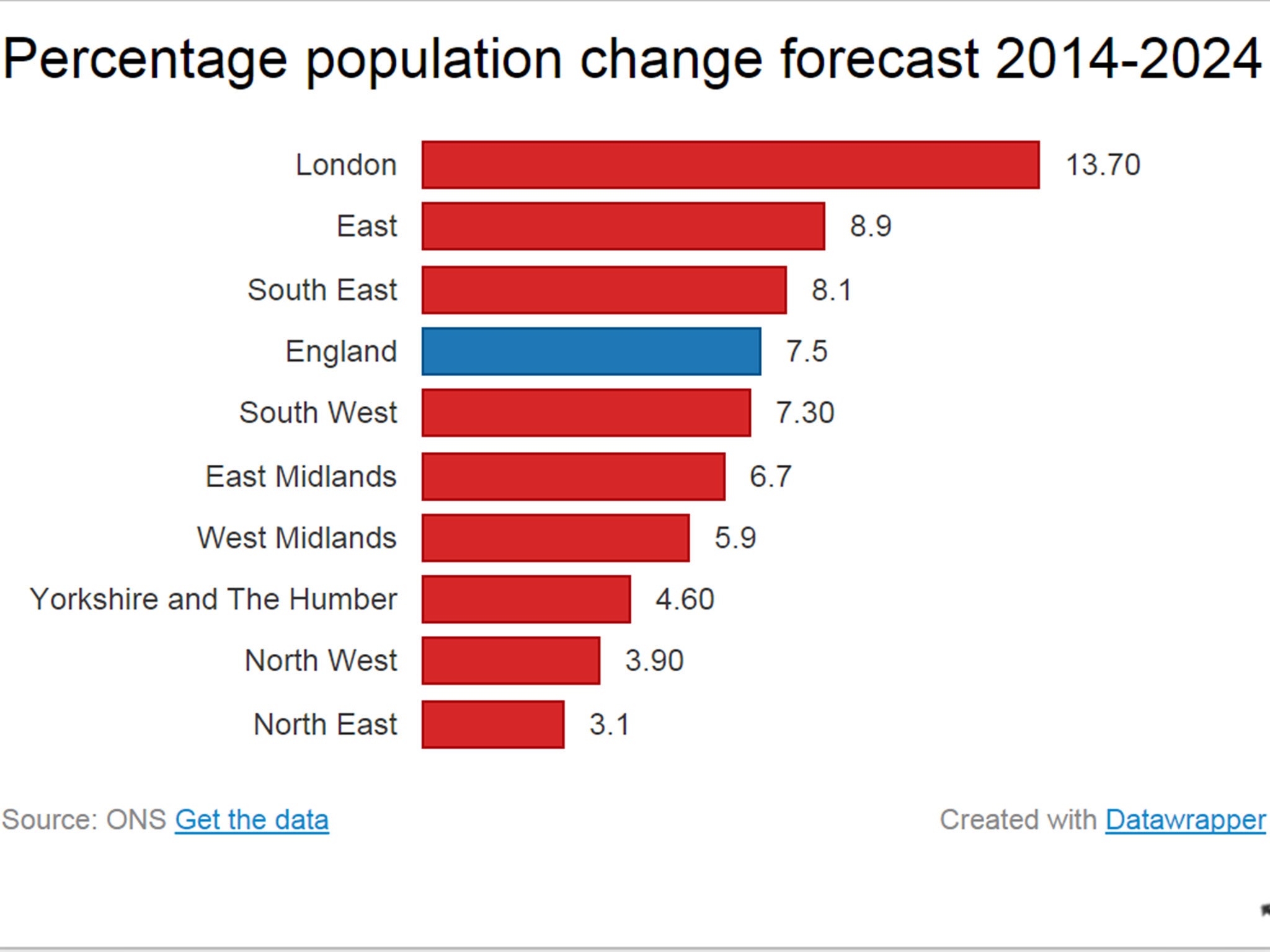London population predicted to near 10 million within a decade as England continues to grow
The ONS expects 315 out of England's 324 local authorities to see their population increase over the period

Your support helps us to tell the story
From reproductive rights to climate change to Big Tech, The Independent is on the ground when the story is developing. Whether it's investigating the financials of Elon Musk's pro-Trump PAC or producing our latest documentary, 'The A Word', which shines a light on the American women fighting for reproductive rights, we know how important it is to parse out the facts from the messaging.
At such a critical moment in US history, we need reporters on the ground. Your donation allows us to keep sending journalists to speak to both sides of the story.
The Independent is trusted by Americans across the entire political spectrum. And unlike many other quality news outlets, we choose not to lock Americans out of our reporting and analysis with paywalls. We believe quality journalism should be available to everyone, paid for by those who can afford it.
Your support makes all the difference.The population of London is expected to near 10 million people within a decade as the capital remains the fastest-growing region in England.
According to the Office for National Statistics’ (ONS) latest population predictions, there will be by 9.7 million residents in the city by the middle of 2024 and the rate shows no sign of slowing.
Suzie Dunsmith, from the ONS’ population projections unit, said: “All regions of England are projected to see an increase in their population size over the next decade, with London, the East of England and South East projected to grow faster than the country as a whole.
“The population is also ageing with all regions seeing a faster growth in those aged 65 and over than in younger age groups.”

Nine out of 10 fastest-growing local authorities are in London, with the eastern boroughs of Tower Hamlets, Barking and Dagenham and Newham topping the charts, while the only area outside the capital in the top 10 is Corby.
The Northamptonshire town is forecast to expand by 17 per cent over 10 years, seeing its population rise to 76,000.
The East and South East of England are also growing faster than the national average, at 8.9 per cent and 8.1 per cent respectively.
All regions of the country are expected to see their populations but the slowest increase expected by the ONS is in the North East, on 3.1 per cent, followed by the North West and Yorkshire and the Humber.
But the number of residents in nine out of 324 local authority areas is predicted to decline, including Barrow-in-Furness, Cumbria, which is projected to see its population fall by 2,900 people, or 4.3 per cent in the period.
Seven of the decreasing areas are in the North West, including Blackpool and Burnley, with one, Redcar and Cleveland, in the North East and another, Richmondshire, in Yorkshire and The Humber.
“It should be noted that the projections reflect current trends and do not take into account the ability of an area to accommodate any extra population,” a spokesperson for the ONS said.
“The primary purpose of the subnational projections is to provide an estimate of the future size and age structure of the population for regions, local authorities and Clinical Commissioning Groups in England. “These are used as a common framework for informing local-level policy and planning in a number of different fields.”
The number of local authorities where more than a quarter of residents are aged 65 and over is projected to increase from 28 out of 326 in mid-2014 to 84 areas in mid-2024 as the population continues to age.
Nationwide, England is expected to house 58.4 million people by mid-2024, up from the 2014 figure of 54.3 million.
The ONS makes its predictions every two years, based on population estimates, fertility and mortality rates and migration.
Join our commenting forum
Join thought-provoking conversations, follow other Independent readers and see their replies
Comments